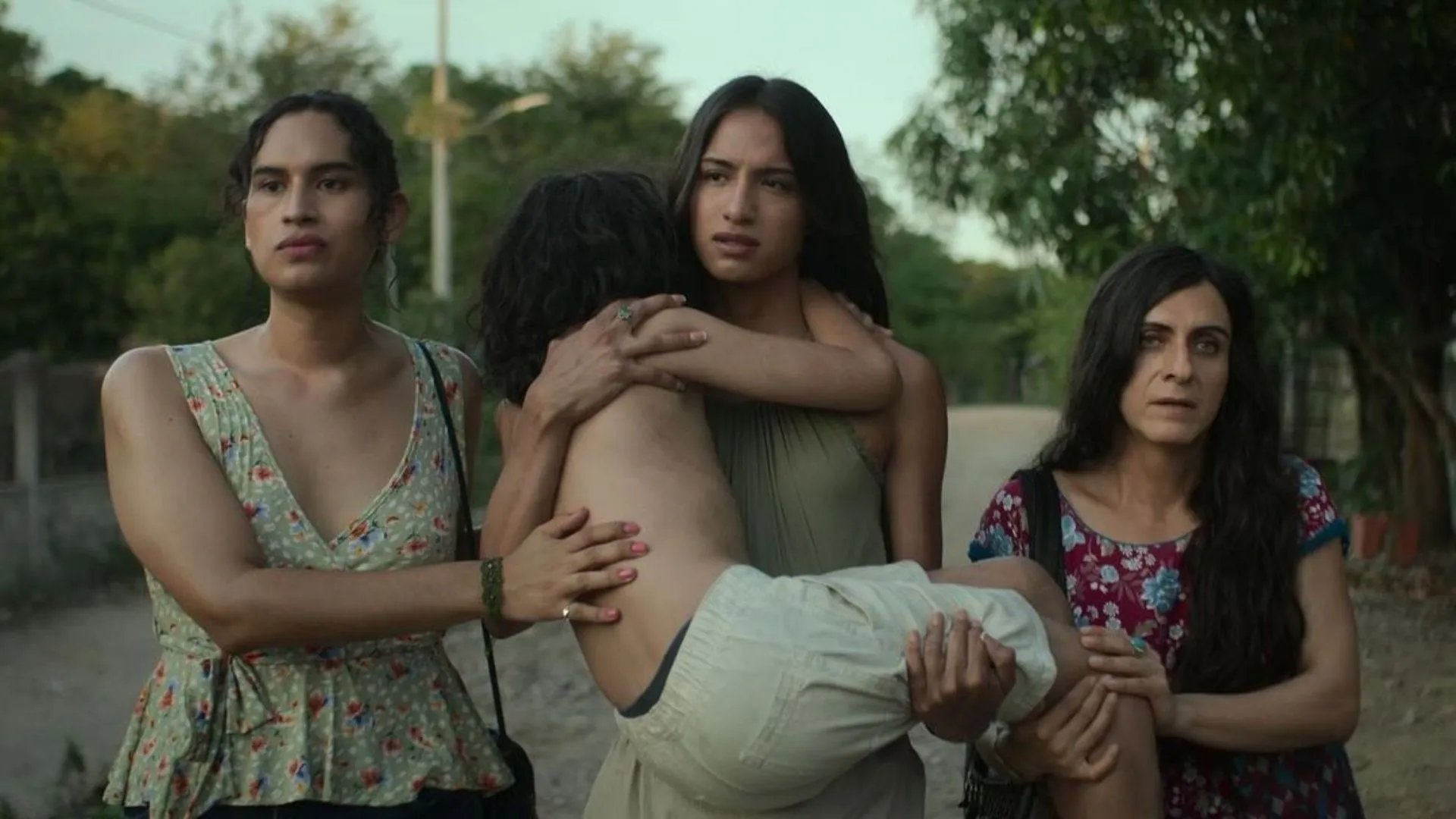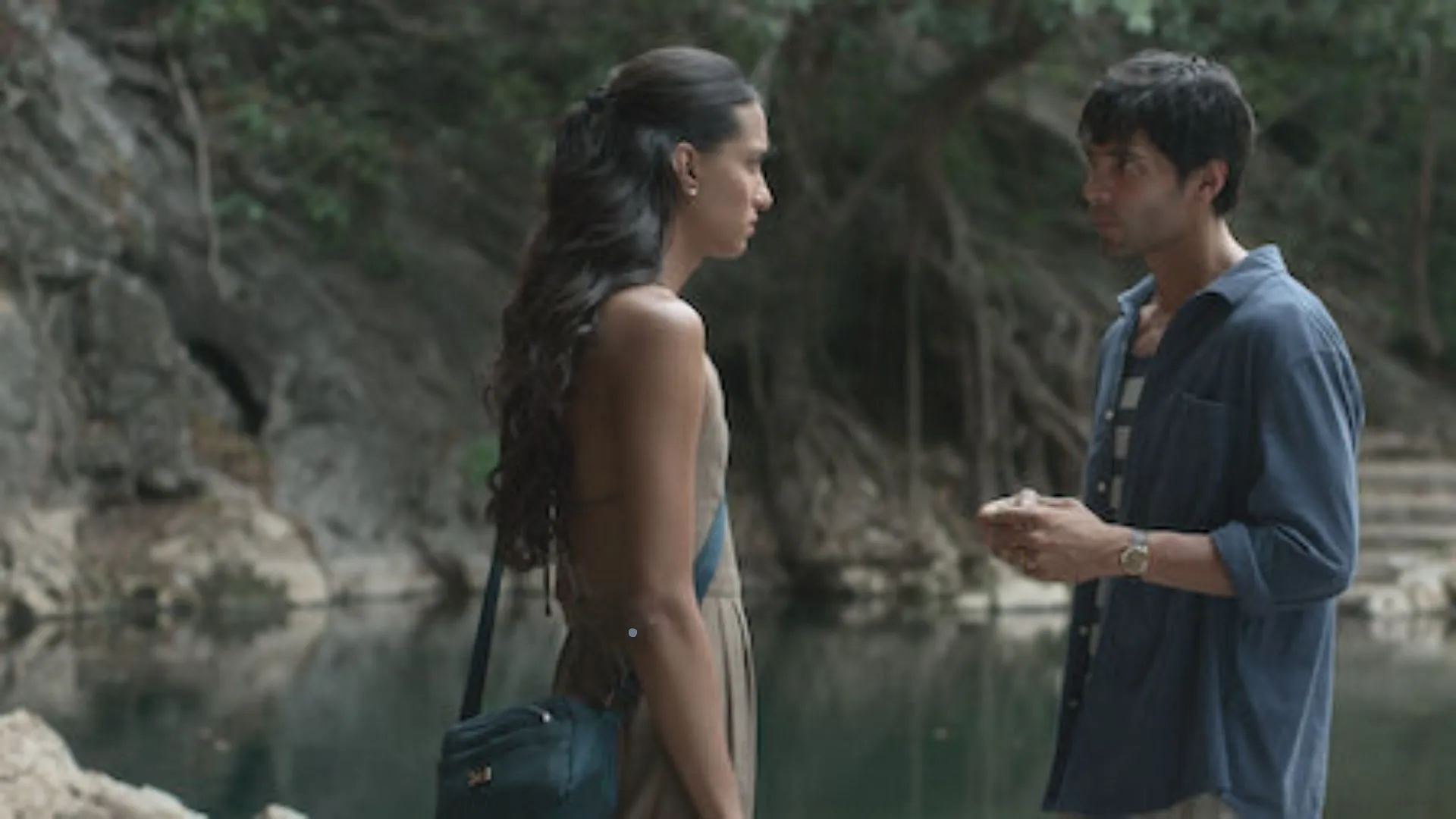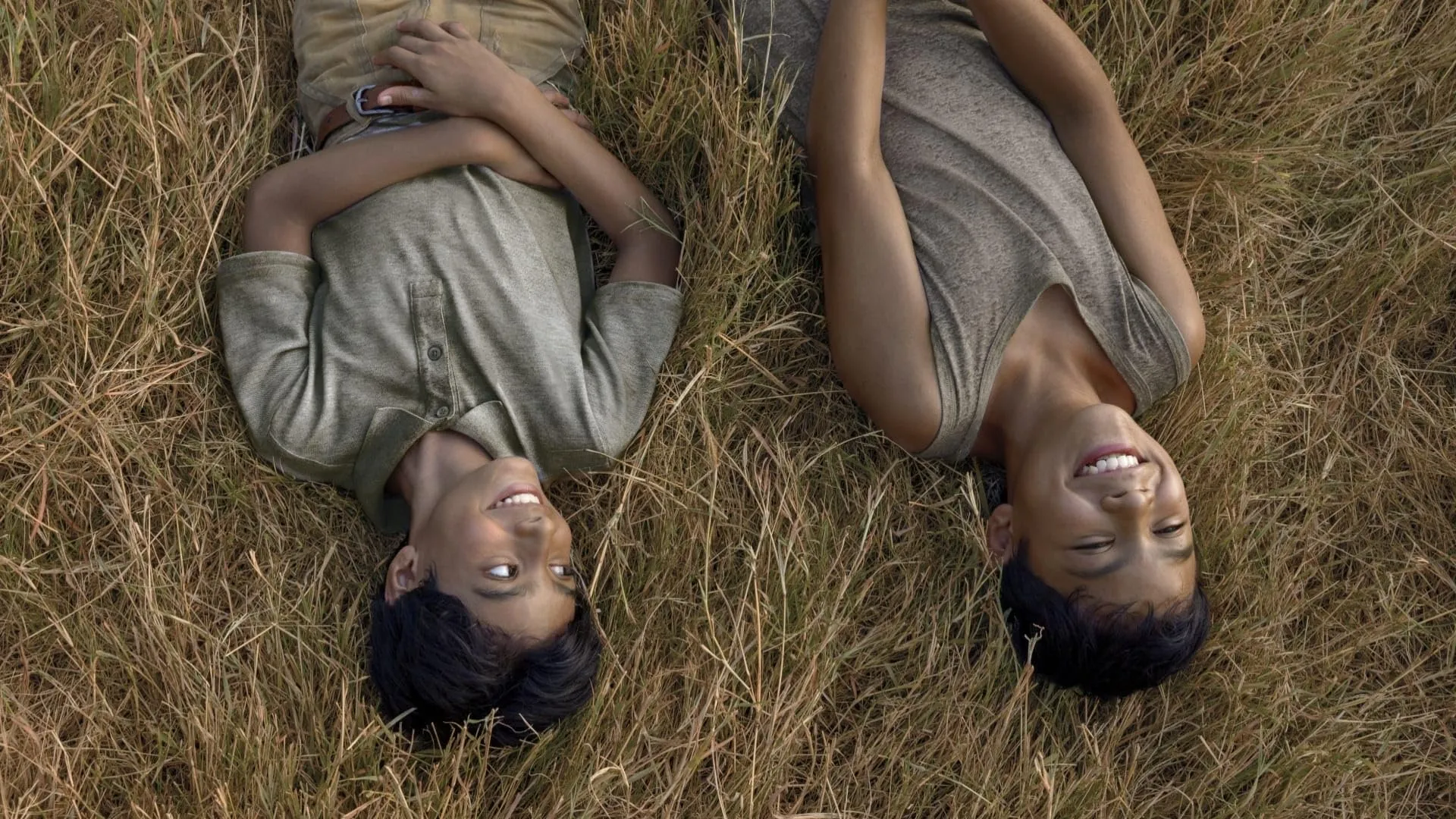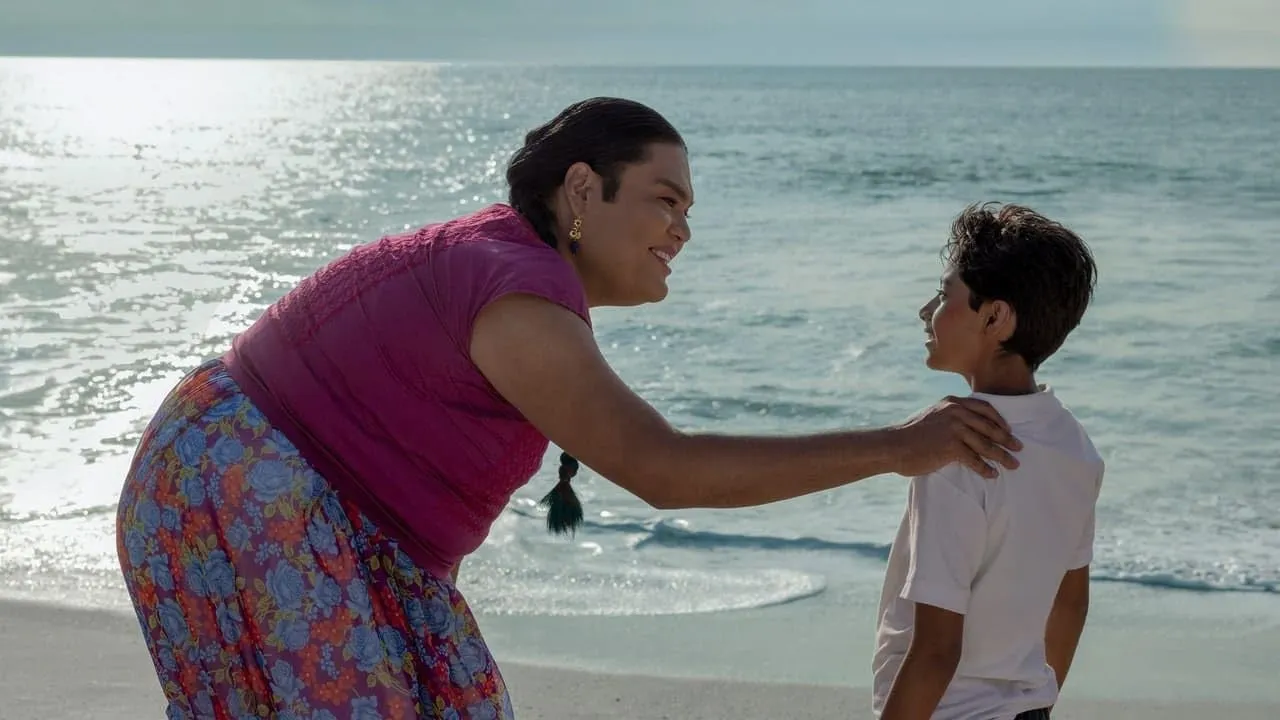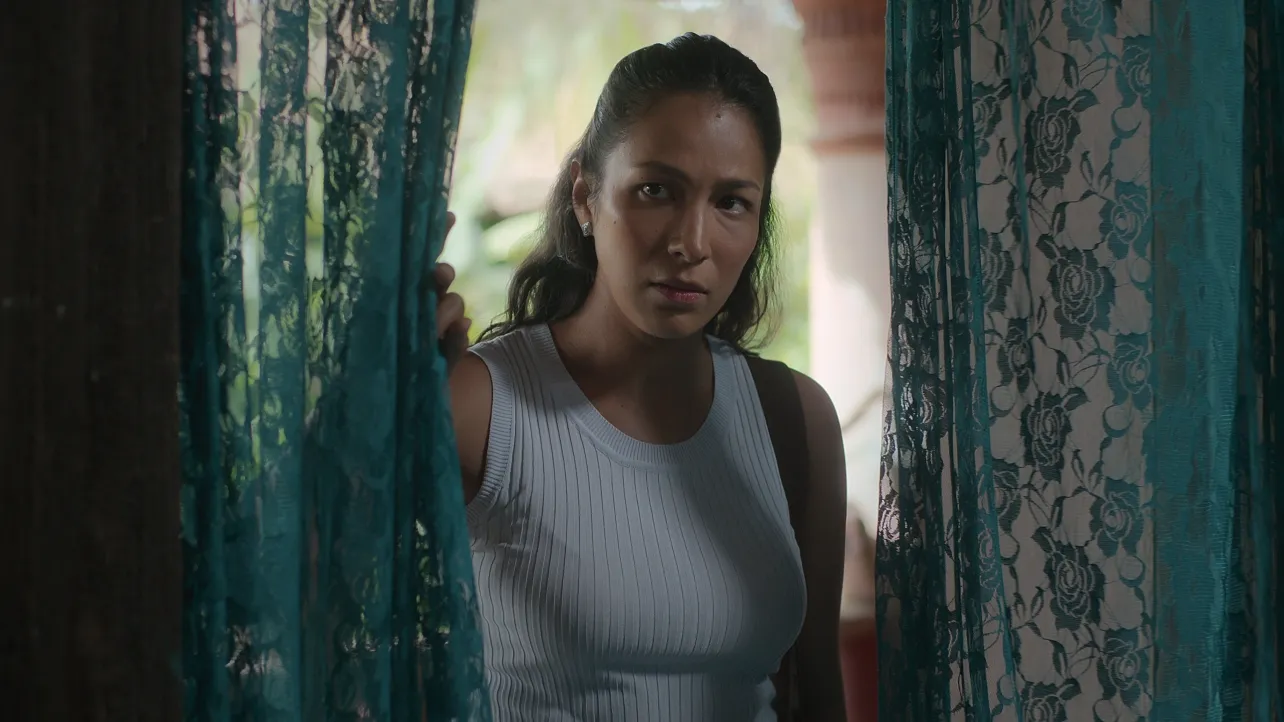The arrival of Manuel in a small town in Oaxaca sets the stage for a moving exploration of friendship against a backdrop of societal expectations in The Secret of the River. Manuel’s initial interactions with Erik, a stereotypical boy whose sportsmanship contrasts with Manuel’s more sensitive personality, highlight the complexities of male friendships formed by cultural norms. In a conservative community where traditional manhood is strictly enforced, especially by Erik’s father, Jacinto, their bond develops amid the vibrant yet oppressive atmosphere.
A tragic confrontation by the river serves as the spark that ignites their relationship, weaving their stories together through shared trauma. The accidental death of a guy who was trying to attack Manuel becomes a heavy secret that ties the boys together but also threatens to tear their lives apart. This scene perfectly captures the show’s deft handling of darker themes, reflecting the harsh realities marginalized people face.
After twenty years, Manuel transforms into Sicar, a journey marked by resilience and self-discovery. Her return to the Isthmus of Tehuantepec not only rekindles unresolved tensions but also questions the male-centered rules that have long ruled her community. Setting the stage for a deeply personal and political narrative, the series skillfully captures the evolution of identity and the enduring power of friendship through this time jump.
The Evolution of Identity: Manuel, Sicarú, and Erik
The lives of Manuel and Erik, whose journeys are intricately woven into the fabric of their community’s cultural norms, provide a compelling study of how men develop character. The narrative is centered on Manuel’s transformation into Sicar, which represents a deep exploration of gender that challenges conventional gender roles. Manuel is portrayed from the beginning as a sensitive boy trying to make sense of the complexities of his life in a small, religious town.
His interest in the Muxes, especially through his relationship with Solange, serves as a turning point in his journey. In accepting the Muxes’ representation of gender fluidity, he begins to comprehend the complexity of his identity at this point. His first meeting with Solange, which sparks his self-acceptance and eventually leads to his transition, is one of the series’ key moments, thoughtfully illustrated.
On the other hand, Erik’s character embodies the struggle of growing up in a patriarchal setting. Social pressures made Erik hesitant to start a friendship with Manuel at first. His inner struggle is a powerful reflection of the toxic masculinity around him. His development is marked by moments of defiance against his father, Jacinto, whose homophobic views and steadfast beliefs are a constant source of tension.
Erik is shaped by his father’s impact, making him think about what it means to be a man and what friendship means. Erik learns to stand by Manuel as the series goes on, which is a big change in his character that shows how society is changing regarding acceptance and understanding.
The narrative is enhanced by supporting characters, especially Solange and the Muxes society. Solange represents the resilience of marginalized identities and serves as a guide for Manuel on his journey. The Muxes community is portrayed with nuance, reflecting the struggles and successes of those who challenge social conventions.
On the other hand, Jacinto’s character represents the oppressive forces in the narrative, showing how deeply ingrained prejudices can affect family relationships and personal growth. Together, these people make up a rich tapestry that improves the story, improvises it, chal,lenges viewers to reflect on their social contexts, and rethink ideas of identity and acceptance in a cultural landscape that is changing quickly.
Cultural Context: The Muxes and the Evolution of Identity
Through its representation of the Muxes, a recognized third gender in this indigenous society, The Secret of the River is an important cultural artifact, illuminating the rich tapestry of Zapotec identity. People often describe muxes as men with feminine traits. They have been a part of Zapotec society for hundreds of years, challenging Western ideas of gender that are either male or female.
The series not only presents viewers to this vibrant community, but it also gives them a voice and shows them in a way that counters the way they have historically been treated. The series establishes itself as an important player in the larger conversation about representation in media by centering the Muxes in its narrative and emphasizing the significance of cultural specificity in discussions about gender and identity.
The Secret of the River also deftly addresses issues of identity and acceptance, especially through the character arcs of Manuel and Sicar. The show’s narrative structure is a deliberate commentary on the strict gender roles still in many countries today. By following Manuel’s journey to self-acceptance, viewers can see the struggles people who don’t fit traditional expectations go through. Sicar’s return to the Isthmus sparked societal reactions that serve as a microcosm for larger cultural changes by highlighting the tensions between progressive ideals and conservative beliefs.
This exploration of non-binary identities resonates with modern audiences and represents a growing trend in television that seeks to question conventional wisdom. The series stands out as a beacon of hope for underrepresented voices as streaming services continue democratizing storytelling, indicating that the television landscape is slowly changing toward greater inclusion and understanding.
Cinematography and Direction: Crafting Visual Poetry
The cinematography in The Secret of the River is very important to the narrative because it adds to the story’s emotional depth and cultural authenticity. The sweeping landscapes of Oaxaca, which are lush, vibrant, and occasionally haunting, serve not only as a backdrop but as a character in and of themselves. Viewers are invited to become immersed in the rich tapestry of Zapotec culture by the camera’s ability to catch the intimate moments between characters and the area’s vast beauty.
This visual storytelling is done carefully; every frame is designed to make you feel nostalgia, longing, and the harsh truths of the characters’ lives. Natural light strengthens this link to the environment, drawing attention to the contrast between the character’s inner turmoil and the calm but turbulent river that stands for danger and comfort.
Ernesto Contreras, Alba Gil, and Alejandro Zuno’s picks as directors have made the series even more emotionally powerful. Their storytelling style is marked by a careful balance between realism and magical realism, allowing for a narrative that feels both grounded and ethereal. With pacing that reflects the ups and downs of their relationship, the directors expertly handle the complexities of Manuel and Erik’s friendship. They create a rhythm that reflects the intricacies of youth and the weight of unspoken secrets by interspersing moments of tension with instances of levity and warmth.
Additionally, the directors’ dedication to accurate representation is clear in the story, as well as their work with local talent and cultural consultants. This choice made behind the scenes improves the narrative and signals a larger trend in the business, giving more weight to real voices and stories from the communities being portrayed. The Secret of the River stands out as an example of the power of visual storytelling that is both culturally relevant and emotionally powerful in an era where the demand for diverse narratives is on the rise.
Themes and Messages: Friendship, Trauma, and the Quest for Identity
The Secret of the River is a profound exploration of friendship, especially the bond between Manuel and Erik. Their relationship, which begins in childhood innocence, is marked by a sense of adventure and vulnerability that they both share.
Their friendship grows stronger as they deal with the problems that arise because they live in a strict area. This shows how friendship can change people even when society pressures them. The series shows this bond in a complex way, reflecting how friendships can be both a safe place and a source of conflict, especially when outside forces try to separate them.
Trauma serves as a central theme that runs through the narrative in a tangled web, affecting character relationships and individual development. Not only does the terrible event by the river keep Manuel and Erik from telling anyone, but it also forces them into a shared mental landscape of guilt and fear. This trauma makes Their friendship more difficult, creating a rift that lasts the rest of their lives.
The series skillfully shows how unresolved trauma can change people’s identities and relationships, forcing viewers to confront the often painful realities of growing up in a harsh world. Erik’s journey reflects how society frequently stigmatizes vulnerability and emotional expression, especially among men.
Sicar’s journey toward self-acceptance embodies the struggle for identity in a world full of prejudice, perhaps the most moving part of the series. In a society that seeks to define her, her name change from Manuel to Sicar represents more than just a name change; it also represents a reclaiming of agency and an identity. The series shows her inner and outer struggles, showing how brave it is to be yourself even when others don’t like it. Particularly in light of current talks about gender representation and acceptance, this exploration of self-identity resonates strongly.
The Secret of the River stands out as a potent testament to the enduring power of friendship, the intricacies of trauma, and the crucial quest for self-acceptance in a landscape where narratives that reflect diverse experiences are becoming more prevalent. The idea is that the road to understanding oneself is often difficult, but in the end, it is a journey worth taking. It is reinforced by the fact that it challenges viewers to reflect on their relationships and identities.
Narrative Structure: Balancing Suspense and the Surreal
The narrative structure of The Secret of the River expertly balances suspense with character development, creating a gripping watching experience that keeps audiences interested while fostering strong emotional connections.
The pacing of the series is especially interesting; it alternates between moments of high tension, like the gripping aftermath of the river incident, and quieter, introspective scenes that allow for character exploration. This duality ensures that viewers are not only interested in the story unfolding but also in Manuel and Erik’s journeys. The deliberate pacing allows the characters’ emotional arcs to resonate authentically, reflecting the complexities of growing up in a difficult environment. The slow buildup to crucial moments cleverly heightens the tension.
The series also does a great job of adding aspects of magical realism to its over-the-top narrative. This combination gives the story a dreamlike quality that raises the emotional stakes, allowing the characters’ inner struggles to show up in beautiful ways.
A better understanding of the characters’ psychological experiences is made possible by surreal scenes, like the scary river or the vibrant pictures of the Muxes community. The series questions traditional narrative formats frequently seen in mainstream television by fusing magical realism with melodrama, broadening the scope of its storytelling and challenging them.
This cutting-edge strategy reflects a growing trend in the industry, where narratives are increasingly examining the line between reality and fantasy, enticing viewers to connect with stories that hit them on both an emotional and intellectual level. The Secret of the River signals a possible change in how streaming platforms can accept different storytelling techniques that reflect the complexities of modern life as they navigate themes of identity, trauma, and friendship.
Conclusion: A Landmark in Contemporary Storytelling
Through its rich emotional depth and cultural specificity tapestry, The Secret of the River appears as a groundbreaking series that redefines modern storytelling.
The show not only addresses important societal problems like gender identity, trauma, and the quest for acceptance but also resonates with universal themes of friendship and resilience by centering the experiences of Manuel, Sicar, and Erik. Its complex depiction of the Muxes society provides a crucial counter-narrative to the stereotypical representations of men in the mainstream.
Audiences are captivated by the series’ emotional journey, which encourages them to reflect on their own experiences with identity and belonging. The Secret of the River challenges viewers to confront the complexities of human relationships in a rapidly changing world through its innovative use of magical realism and compelling narrative structure. The series establishes a precedent for genuine representation and storytelling that values cultural richness and emotional honesty as it continues to shape the landscape of streaming television.
The Review
The Secret of the River
The Secret of the River is a moving exploration of friendship, identity, and resilience that expertly weaves together magical realism and deeply personal narratives. To show the Muxes community and the struggles of its characters in a real way goes against the rules of traditional storytelling. This makes it an important addition to modern television. Not only does the series make viewers feel a lot, but it also challenges ideas about representation and cultural dialogue.
PROS
- Highlights the lives of the Muxes community with sensitivity and accuracy.
- Engages viewers through complex character arcs and relationships.
- Blends magical realism with melodrama, creating a unique narrative experience.
- Provides insight into Zapotec traditions and contemporary issues.
- Stunning cinematography that enhances the storytelling.
CONS
- Some viewers may find slower moments detract from the overall suspense.
- The intricate exploration of trauma and identity may be challenging for some audiences.
- Its specific cultural focus might not resonate with all viewers.









































